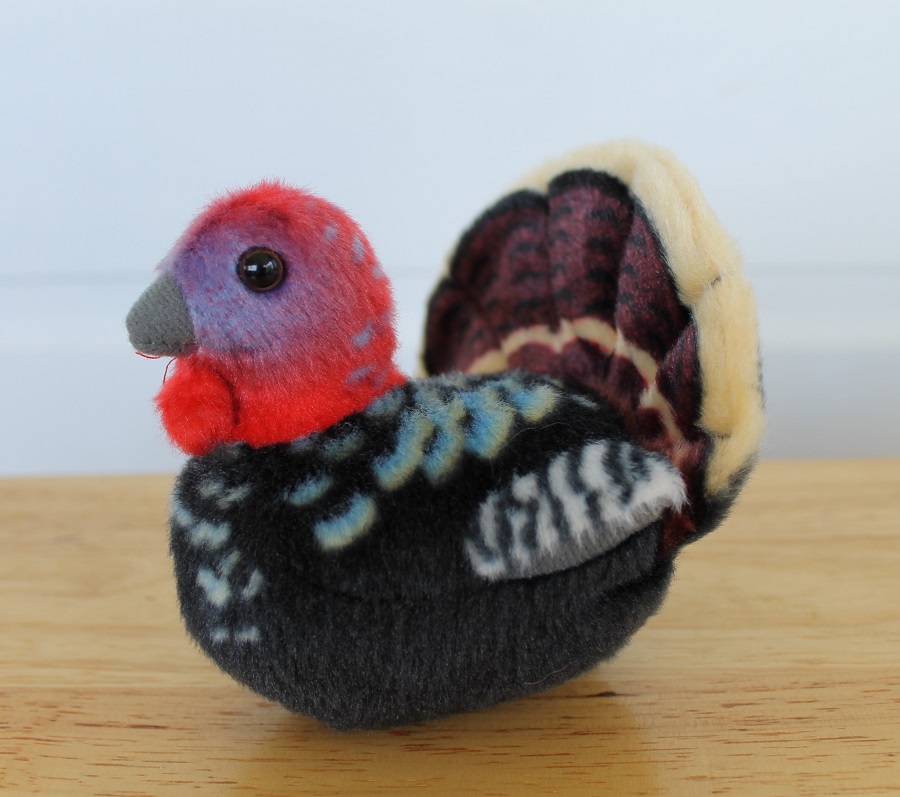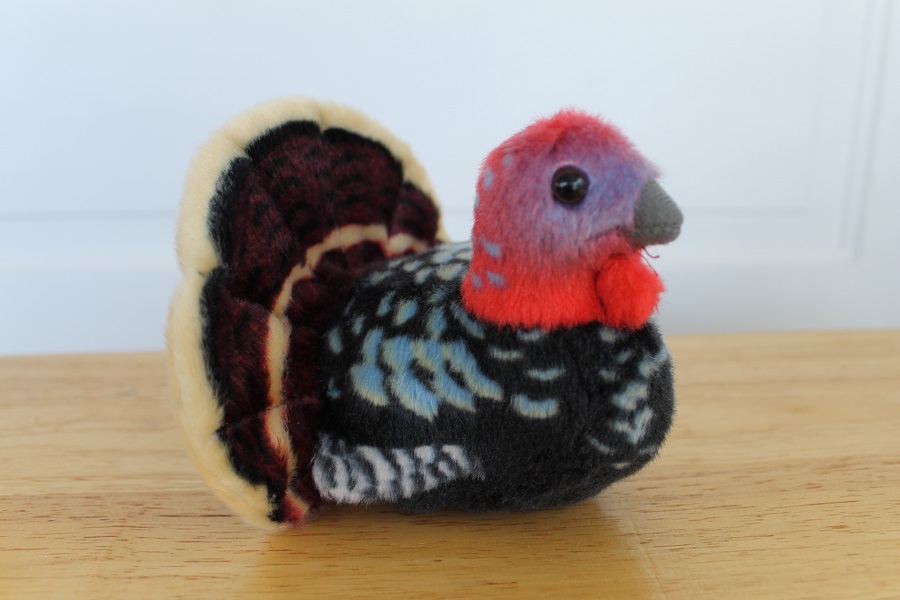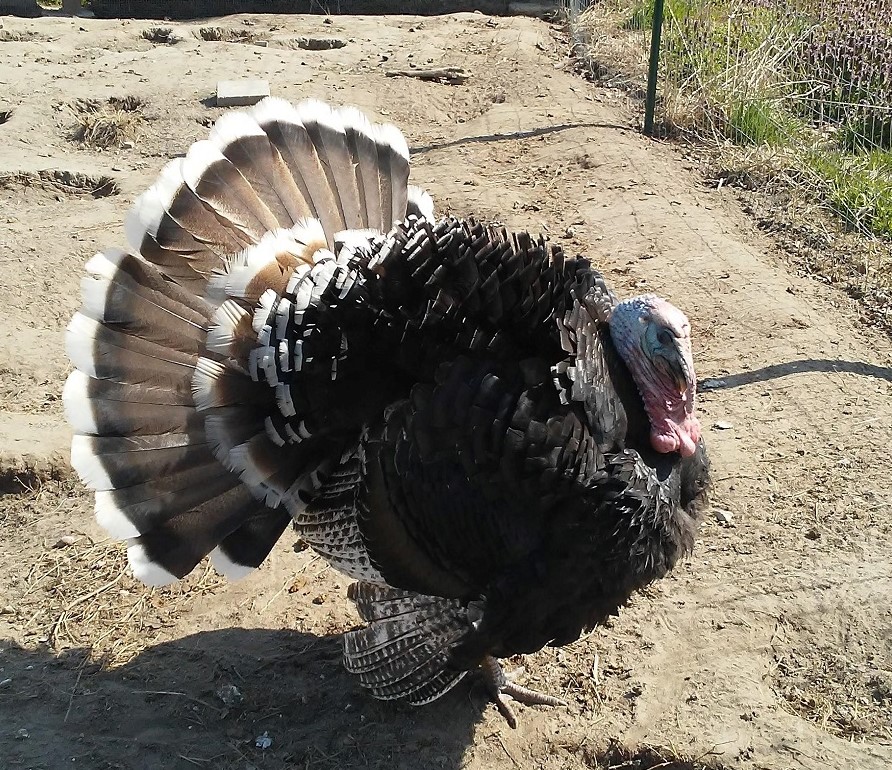It’s that time of year again, when the United States celebrates Thanksgiving and everything relating to the wild turkey (Meleagris gallopavo) and its domesticated counterparts. Last year I missed the opportunity to review a specimen of this highly symbolic bird but I’ve come prepared this year. This turkey is part of the Wild Republic Audubon Birds line of plush birds that emit authentic vocalizations provided by the Cornell Lab of Ornithology. I am an avid fan of these toys and my daughter has an extensive collection of them (and their frog counterparts) that I’m sure will be covered in future reviews. In addition to being educational these plush toys do an admirable job of depicting adorable, vibrant, and reasonably accurate renditions of many North American bird species, many of which have not be reproduced in plastic. These toys are commonly encountered in museums, garden stores, wildlife refuges, nature centers, and zoos among other places. In addition they can also be found readily online as well.

The wild turkey is one of two turkey species along with the ocellated turkey (Meleagris ocellata) but there are actually 6 sub-species of the wild turkey, ranging over much of the United States east of the Rocky Mountains. Isolated sub-species also live in portions of the U.S. west of the Rockies and in Central America. Turkeys belong to the Phasianidae family within the order Galliformes.

The Wild Republic turkey depicts a mature male or “Tom” turkey in breeding display, which is how turkeys are usually depicted. So popular is this image that when I was a small child I actually thought this was how male turkeys looked all the time, I didn’t realize it was just a display! I have to wonder how prevalent that belief is among the general public. Tom is the name given to mature male turkeys only, yearling males are called Jakes, yearling females are Jennies, and mature females are hens. Baby turkeys are called poults.

The head, neck, and wattle are red and blue, displaying the fired up coloration of a male turkey in display. The body is black with blue and cream colored feathers along the chest and back. The nubby little wings are barred black and white, and the tail has a metallic purple sheen with cream and black colored bars. Overall it is a decent reproduction of a wild turkey’s diverse range of colors, especially for a plush toy. My only complaint is that the turkey doesn’t have legs, but that’s true for many of these Audubon birds. For the songbirds it’s acceptable but it’s odd to omit them on a turkey, a bird known for its long legs.

When pressed the toy emits the classic gobbling call of a male turkey. Although we associate this sound with turkeys in general it is only the males that gobble. But turkeys in general have a wide range of vocalizations with different distinct meanings and applications. Replicating the many purrs, cackles, clucks, and putts of the wild turkey is considered a kind of art form among the people that hunt these birds, so much so that people even compete with each other in turkey calling competitions.

Although the vocalizations are a key selling point with these birds it should be pointed out that eventually, and inevitably, the toy will stop producing sounds. There is no access point on these toys to change out batteries so once it’s done, that’s it. Someone skilled with a needle and thread might be able to replace them but I haven’t personally tried it yet. I’ve had some of these toys last for years and others stop calling in a matter of weeks. Keep in mind when you purchase them in a store that they’ve probably been pressed numerous times over their duration on the shelf, and might already be on their way out.

As I stated before, I’m a big fan of these toys and try to promote them whenever the opportunity arises. Although they eventually stop producing sounds they still nicely represent a wide variety of local bird species that anyone, in North America at least, might see in their own backyard and surrounding area. Making kids know and appreciate their local native wildlife is important and I feel like these toys help in that regard. The Audubon Bird’s wild turkey is easily found online for under $10 USD and along with the other Audubon Birds is a great gift idea and stocking stuffer for bird fanatics young and old alike.
Disclaimer: links to Ebay and Amazon on the AnimalToyBlog are affiliate links, so we make a small commission if you use them. Thanks for supporting us!



